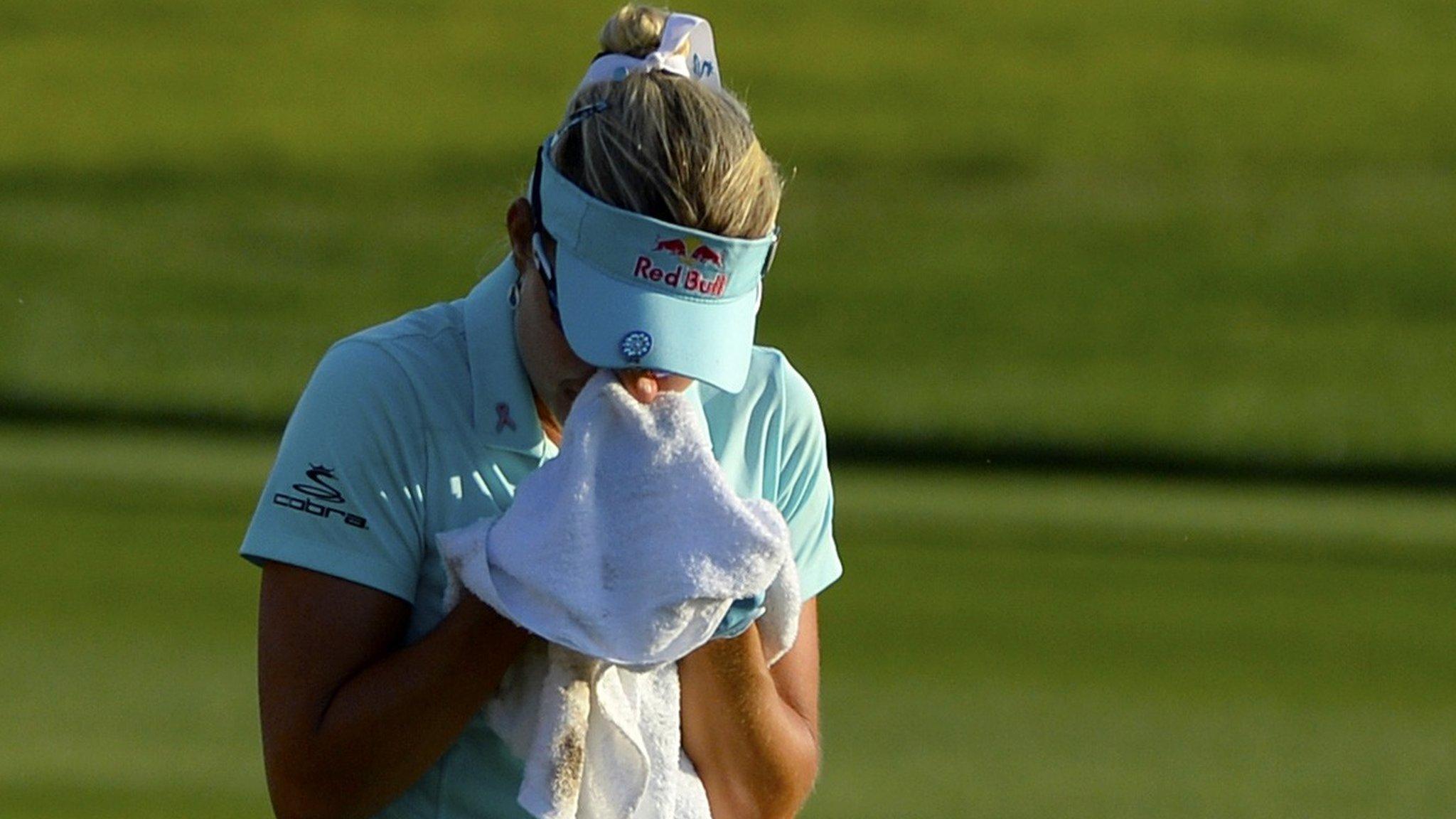Golf video technology changes made after Lexi Thompson controversy
- Published
Watch how Thompson loses major after TV replay
Golf's rule-makers have made changes to lessen the impact of video technology after Lexi Thompson controversially lost the ANA Inspiration in April.
American Thompson, 22, was given a four-stroke penalty while leading the final round of the year's first major.
A television viewer spotted Thompson incorrectly replacing a marked ball in the third round, and told officials.
The R&A and USGA said players "should not be held to the degree of precision" provided by video technology.
The governing bodies want to allow tournament officials more flexibility to apply common sense in certain situations.
A joint statement added: "The use of video technology can make it possible to identify things that could not be seen with the naked eye."
The changes state:
If a breach could not be seen with the naked eye or players were not aware, it will not be deemed a breached of the rules
A player's reasonable judgement will be accepted, even if later proved wrong by video evidence
Britain's four-time major winner Laura Davies told BBC Radio 5 live: "It's a great idea. It's just a shame it cost Lexi a major championship. My heart goes out to her."
Analysis
BBC golf correspondent Iain Carter:
These changes lessen the influence of video referrals and strengthen the emphasis on player integrity when rules issues arise. If it takes enhanced footage to identify a rules breach, such evidence would not lead to a penalty.
This standard has been in place since 2014 with regard to the movement of a ball at rest.
The second change, when players use reasonable judgment to determine a specific location in applying the rules, relies on a golfer's integrity. It refers to how a player might take a free or penalty drop or replaces their ball after marking it.
This was the instance with Lexi Thompson at last month's ANA Inspiration when the American ended up incurring a four-stroke penalty for incorrectly replacing her ball in the third round.
It took video evidence, spotted by a TV viewer the following day, to spot the infraction and the subsequent furore prompted Tuesday's announcement. A broader review of the overall validity of television footage in deciding rules issues has also been set up.
- Published3 April 2017

- Published3 April 2017
- Published3 April 2017
